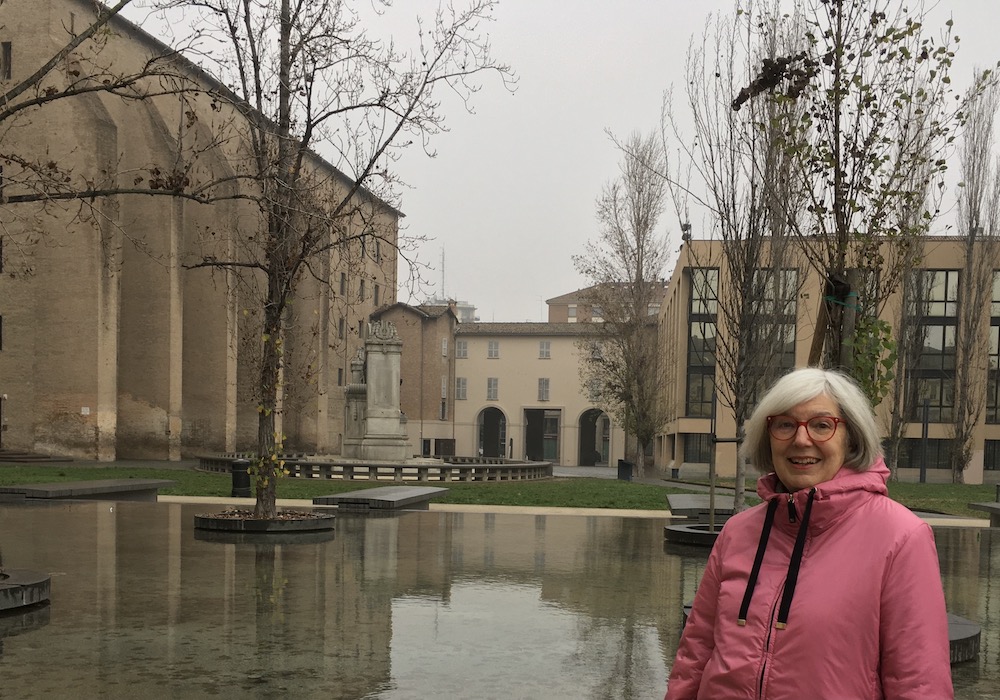If each city is like a game of chess, the day when I have learned the rules, I shall finally possess my empire, even if I shall never succeed in knowing all the cities it contains.
—Italo Calvino, Invisible Cities
Can you describe the mood of A Coruña as you feel/see it?
It is a melancholic city but not sad. A Coruña is very tranquil, although its slow pace hides a vibrant mood underneath. It has about 250,000 inhabitants, so it is not small yet it is not a big city either. A Coruña enjoys most of the cultural activities of any big city: an opera house, theaters, an active poetry scene, in both official languages, Galician and Spanish
What is your most heartbreaking memory in this city?
Leaving A Coruña for New York when I was a teenager, and not knowing when I was going to be able to come back. A Coruña is part of the autonomy of Galicia and it used to be a pretty poor region. Growing up there, I knew, like many children there, that we would have to leave, yet that knowledge did not make the experience any easier.
What is the most extraordinary detail, one that goes unnoticed by most, of the city?
A Coruña smells of salt. The sea surrounds almost the entire city. Its salty, marine smell is pervasive.
What writer(s) from here should we read?
I highly recommend the Romantic poet Rosalía de Castro. Although she was from Santiago de Compostela, an hour away from A Coruña, she lived in A Coruña for a few years. Among contemporary writers and poets, the novelist Manuel Rivas, and poets Yolanda Castaño and Blanca Andreu. Rivas and Castaño write in the Galician language and are translated into English. Rivas started as a journalist and was part of the Galician ecologist movement. His novels have the immediacy of journalism. His most famous one, The Carpenter´s Pencil is about the Spanish Civil war (1936-1939). Yolanda Castaño is a young poet with a robust poetic voice and a great knowledge of both Galician and Spanish poetic traditions. As for Blanca Andreu, she writes in Spanish, and is one of the most distinguished national poets of the last three decades. She is influenced by the surrealist but has given surrealism a new and fresh turn.
Another poet from the region—from Lugo— is Chus Pato. She has built an outstanding experimental poetic work in the Galician language, and has been translated into Spanish and into English (Shearsman Books, UK).
Is there a place here you return to often?
In the medieval part of the city there is a garden called San Carlos—from its wall you can see the city and the whole bay. The view: astounding beauty.
Is there an iconic literary place we should know?
The house of the great Galician poet Rosalía de Castro, who lived in A Coruña in 1859 in the medieval section of the city. Also, the sixteenth-century castle and the old Roman lighthouse, still working. They are monuments that have inspired many literary passages.
Are there hidden cities within this city that have intrigued or seduced you?
I have lived outside A Coruña for most of my life so for me, the entire city has mystery.
Where does passion live here?
It is difficult to say . . . part of my wonderful childhood memories come back to me with a hint of passion. Yet I wonder if these memories are not part of a narrative I tell myself. Then again, A Coruña is its sea. It’s a peninsula. A city surrounded by the ocean except for a small piece of land. The entrance of the city by the sea is called The Death’s Entrance because of the many dangers it poses.
What is the title of one of your works about A Coruña and what inspired it exactly?
My poetry book, Las lenguas del viajero (The Traveler´s Languages) is inspired by A Coruña and the experience of having to leave at a young age.
Inspired by Levi, “Outside A Coruña does an outside exist?”
It is a city where ships from all over the world stop, a city living in two languages, Galician and Spanish, and a city where a large number of its population has emigrated somewhere. But always come back, even if it’s to visit family and friends. The outside is always present, so maybe that’s its greatest secret; the outside is part of its history and its present.
***
Marta López-Luaces was born in A Coruña in 1964. She is a poet, novelist, and translator. She holds a PhD in Spanish and Latin American Literatures from NYU, and is an Associate Professor at Montclair. She is the author of the short story collection La Virgen de la Noche, and of three collections of poetry: Distancias y destierros (Sgo. de Chile: Red Internacional del Libro, 1998), Las lenguas del viajero (Madrid: Huerga y Fierro, 2005) and Los arquitectos de lo imaginario (Valencia, Pre-Texto 2011), a finalist for the prestigious Ausiás March award. Her work has been translated into many languages including Romanian, French, Portuguese, Romanian, and Italian. She has translated from English into Spanish the Selected Works of Robert Duncan (Madrid: Bartleby, 2011), And For Example by Ann Lauterbach, and the poetry of Louis Glück and Janet Kaplan.
López-Luaces is the curator of the newly founded Bilingual Readings Series at the Cervantes Institute in NY, where two American and two Spanish poets share the stage.
Her novel, Los traductores del viento (2014), has just been released.











